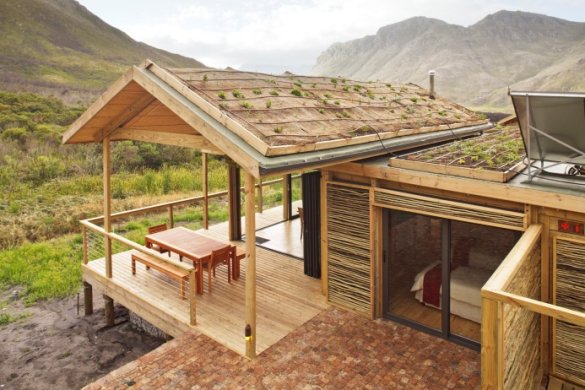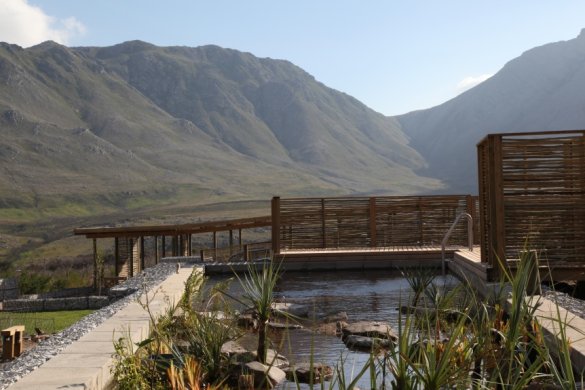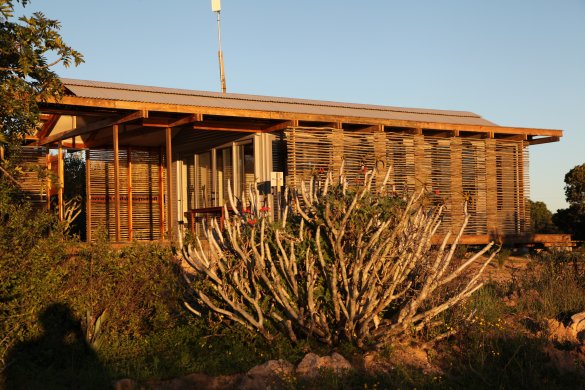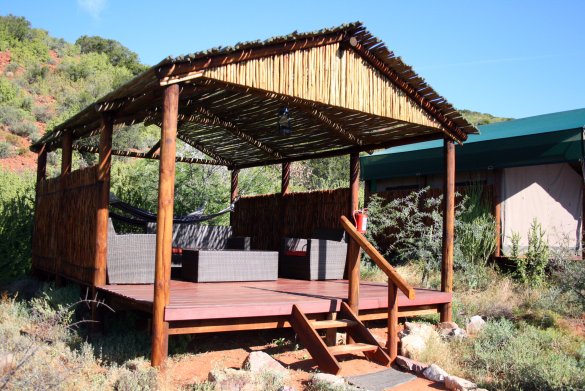Green your next holiday in the Western Cape with CapeNature!
As the guardians of the Western Cape’s precious natural resources, CapeNature is committed to environmental best practice in all its new tourism developments and upgrades. CapeNature focuses on developing nature-based recreational and tourism products by leveraging the province’s natural assets in such a way that protected areas become sought after tourist destinations, and more accessible and attractive to a greater portion of our population. Projects are carefully planned to avoid and mitigate any local environmental harm while also optimising the use of green building technology.
Here are some of CapeNature's most recent projects in sustainable tourism:
Kogelberg Nature Reserve
Kogelberg Nature Reserve is home to the most complex biodiversity on the planet and part of a UNESCO World Heritage Site. Considered the heart of the Cape Floral Kingdom, the biological diversity and its conservation thereof is a priority. Only activities which do not adversely affect natural processes and wildlife are allowed. As a contextualised feature, the Oudebosch mountain camp is a commendable example for good practice of balancing tourist needs and conservation aspects. Oudebosch offers a thoughtful approach to building design and displays durable, recyclable, and renewable materials, and through energy-efficient design extrapolates the visitors’ experience of the reserve to the structural level. It has received the International Holcim Regional Award for sustainable construction with architectural excellence.
Accommodation
The five Oudebosch cabins perfectly balance the tourism needs with environmental needs and has a reputation of being the most beautiful of CapeNature’s protected areas, largely due to the fact that it occupies an area with minimal human interference. The glass fronted eco-cabins afford occupants unique breath-taking views of the reserve. Each eco-cabin at Kogelberg sleeps four people and consists of two bedrooms, one bathroom, one en-suite, and a spacious kitchen, lounge and dining area. The five Oudebosch eco-cabins are named after indigenous flora found in the area: Erica, Marsh Rose, Fire Lily, Iris and Everlasting Daisy. CapeNature will launch 8 new cabins at Kogelberg Nature Reserve this year, adding to the existing compliment of accommodation options on the reserve and all strictly adhering to the principles of sustainable design and use.
Sustainability features (cabins)
- Waterless toilets.
- Cabins linked by wooden walkways and constructed with renewable materials.
- Each cabin has a planted roof with modular planting trays for planting indigenous vegetation to “replace what is lost in terms of the footprint on the earth”. This planted roof also takes a significant heat load off the building in summer and limits heat loss during the winter.
- Chandeliers and lights are finished off with recycled bottles.
- The wooden-floored shower allows water to run through the wooden slats.
-
The central eco-pool has no chemicals and the shallow section has aquatic plants assisting in the cleaning and regeneration process.
Why waterless toilets?
They can greatly reduce water use.
They are hygienic, and odour free.
They help protect precious wetlands from degradation as they are not connected to municipal sewerage lines.
Sustainability features (management offices – currently under construction)
- Project and contractor’s site establishment sited in an old, disused quarry thereby significantly limiting the impact on virgin ground.
- Planted roof with indigenous vegetation.
- Irrigation control system includes sensor to ensure no irrigation occurs during periods of rain.
- Grass blocks installed on driveways to permit tolerable degree of vegetation growth as well as permit free permeation of water into ground.
- Extensive use of structural timber in the construction (from renewable sources) to limit use of wet trades (concrete and mortar).
- Sun shading devices used on the north side of the building to limit direct sun on glazing.
Rocherpan Nature Reserve
As Rocherpan Nature Reserve is home to over 183 species of birds, careful planning was needed in the design to ensure minimal impact on the habitat of these winged visitors.
Accommodation
Rocherpan has eight guest cabins, each named after the bird species found on the reserve. Each cabin has a braai area, with a deck overlooking the reserve, perfect for bird watching. The cottages have direct access to Rocherpan's four bird hides, offering opposing views at the edges of the pan.
Sustainability features
- Waterless toilets.
- The pan is essentially the heart of the reserve and since it is never more than two metres deep at the maximum, it means the sun can penetrate right through the water and provide the perfect warm environment for insects to thrive. This provides an abundant food source for the small birds of the coastal area.
- Rainwater harvesting.
Rainwater harvesting?
Rain that falls onto the roof of the cabins is filtered through the rainrunners and sent to the rainwater storage tank. From the tank the water is pumped into the cabins at approximately 4 bar of pressure, and a self-regulated pump then delivers a steady supply of water on demand.
Captured rain water minimises the losses from piped systems, and as this is water is untreated, it carries a lower carbon footprint.
Gamkaberg Nature Reserve
In the Cape Karoo area, The Gamkaberg Nature Reserve is one of the most species rich environments on earth which is why the Sweet Thorn eco-lodges in this protected area were constructed with the specific aim of demonstrating environmentally friendly lifestyle methods. Acclaimed as one of top 50 most sustainable and responsible tourist destinations on the continent by Africa’s Finest, Gamkaberg’s eco-tourism offerings were designed to provide a first class nature experience, but at the same time create awareness about treading lightly on the environment.
Accommodation
Sweet Thorn, which has 6 beds, is a perfect complement to Gamkaberg’s Fossil Ridge accommodation which has 4. Both are comfortable yet rustic lodges which consist of Safari Style tents on decks (sleeping 2 persons each), ablution building, splash pool and open air kitchen/lounge with lapa. Sweet Thorn is situated adjacent to a Sweet thorn thicket in an area where the open expanse of the Karoo and vistas of the distant Swartberg can be experienced. Fossil Ridge, named after a nearby ridge containing ancient marine fossils is more secluded and enhances close up views of the cliffs and surrounding bush.
Sustainability features
- Solar power is being used for water heating, lighting, toilet fans and pool pumps.
- Being in an arid environment, waterless toilets have also been installed and only environmentally friendly cleaning materials are used on site.
- The two lodges (Sweet Thorn and Gamkaberg's Fossil Ridge) were carefully contrasted along a network of pathways in order to minimise the impact on the surrounding environment.
- More than 70 indigenous trees were planted in the area.
With all these modern sustainability practices in place, CapeNature aims to be at the forefront of eco-tourism in the Western Cape and compliments the commitments made by Western Cape Government to facilitate and promote sustainable development.
Keen to make a booking? Visit CapeNature for more information.




